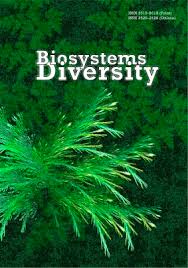Antimicrobial, antibiofilm and biochemichal properties of Thymus vulgaris essential oil against clinical isolates of opportunistic infections
Antimicrobial, antibiofilm and biochemichal properties of Thymus vulgaris essential oil against clinical isolates of opportunistic infections
Author(s): M. V. Kryvtsova, I. Salamon, J. Koscova, D. Bucko, M.J. SpivakSubject(s): Environmental Geography, Evaluation research, Environmental interactions
Published by: Дніпропетровський національний університет імені Олеся Гончара
Keywords: antimicrobial effect; antibiofilm formation; essential oil; garden thyme; large-scale distillation;
Summary/Abstract: Thyme belongs to a genus encompassing over 215 species of hardy perennial herbaceous plants and sub-shrubs, which are native to Europe, particularly around the Mediterranean. Thymus vulgaris L., or garden thyme, with narrow small leaves and clusters of tubular mauve flowers, is used mainly in cookery. Dried herb yields 1% and more essential oil, which is a pale yellowish-red liquid with a sweet, very aromatic odour. Thyme is widely used in the pharmaceutical industry and is a source of substances of antimicrobial effect upon antibiotic-resistant strains of microorganisms. The purpose of our work was to identify the biochemical and antimicrobial peculiarities of Th. vulgaris essential oil against clinical isolates of opportunistic microorganisms. The analysis of thyme essential oil was carried out using GC/MS analysis. The clinical isolates were isolated with the use of differentially diagnostic nutrient media. The antibiotic susceptibility was identified with the help of the disc-diffusion test. The sensitivity of microorganisms to plant extracts was determined by the agar diffusion test. The antibiofilm activity of the extracts was tested in standard 96-well microtitration plates. The GC/MS results confirm the earlier reports that the major volatile constituents obtained from the aerial parts of thyme species were thymol, γ-terpinene, p-cymene, 3-carene and carvacrol.
Journal: Biosystems Diversity
- Issue Year: 27/2019
- Issue No: 3
- Page Range: 270-275
- Page Count: 6
- Language: English

